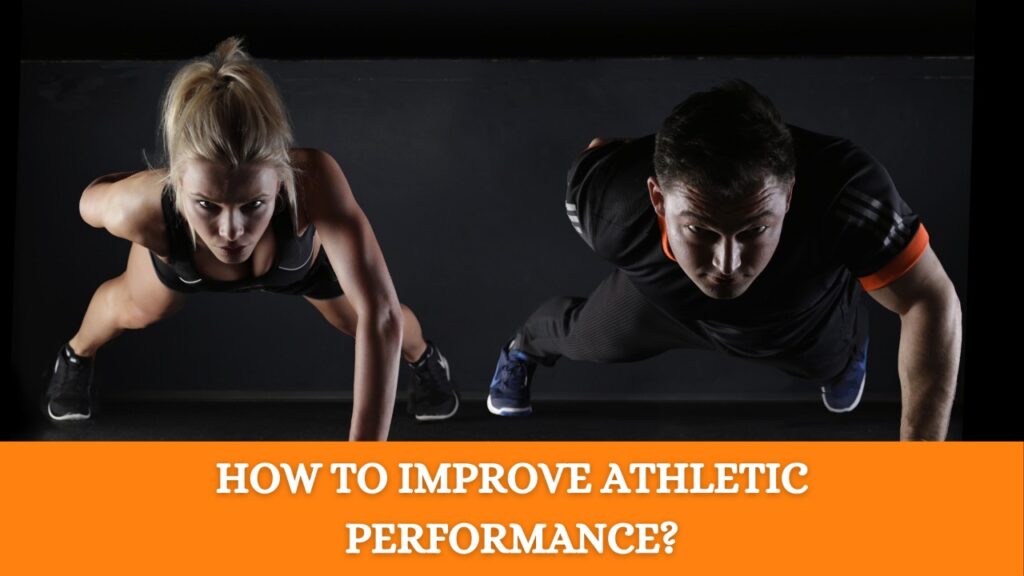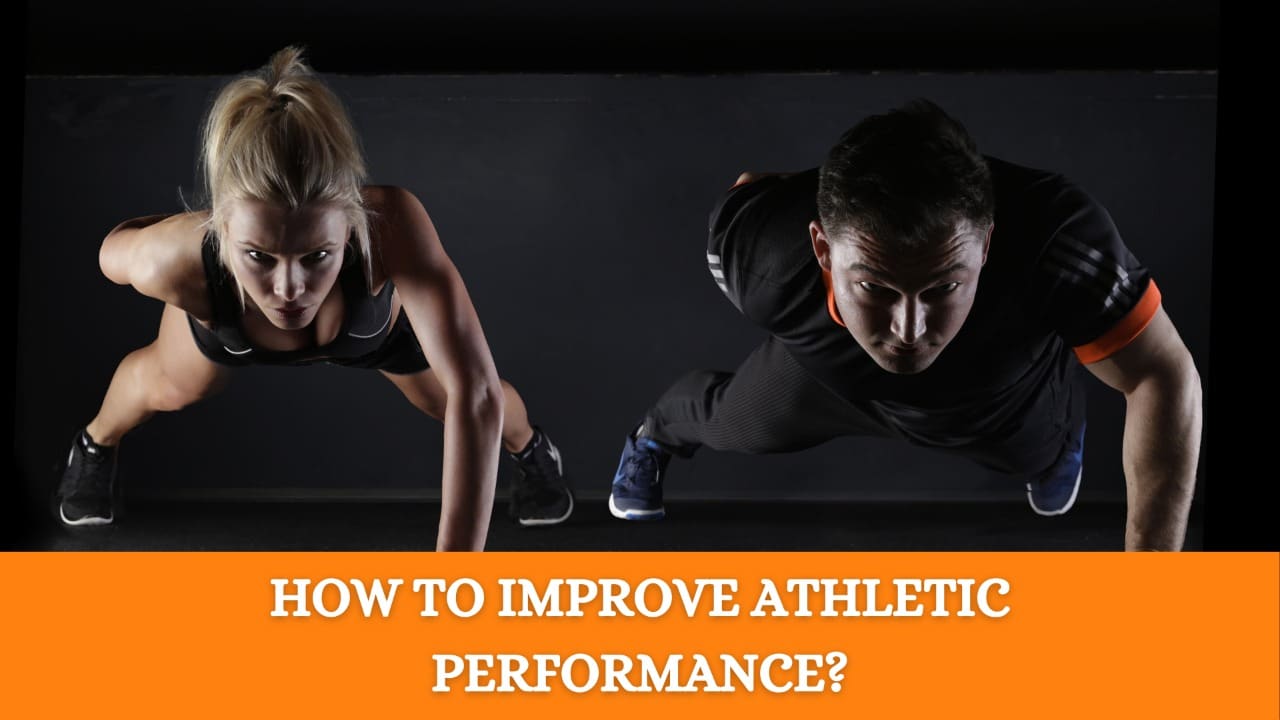It’s easier than it’s ever been to improve sports performance. Athletes are achieving what we never believed possible thanks to current technological advancements and training methodologies. But where should you begin if you want to improve your athletic performance (or that of others)? With so many alternatives, deciding what will be the most efficient use of your time might be difficult. That is why we have put together this tool. It will teach you the most effective strategies for pushing your training to the next level without making things too complicated.
Keep Changing Your Workouts
Functional exercises are the name of the game for many athletes. It’s not about shaping your physique or losing weight for the sake of it when it comes to improving athletic performance. On the field, it’s all about increasing your muscle strength, response time, and mental toughness.
Functional exercises are a terrific basis for your workouts and should always be included. The purpose of these workouts is to strengthen the muscles that will be used throughout the game. Not only can these workouts teach your body to react to various situations related to the sport you play, but they can also help avoid muscular injuries.
Drills are crucial. Functional exercises, on the other hand, should be done at the gym. This permits your body to feel the muscle stress and excitement in a way that isn’t instantly associated with a particular sport.
It’s good to mix things up every now and then, in addition to practical workouts. It’s not possible to realize your maximum potential by repeating the same activities week after week. That stimulus becomes habitual in your body. Your findings may reach a halt as a result of this.
Every two to three weeks, it’s a good idea to switch up your workout. Experiment with different types of exercises. Keep things interesting by doing a different type of cardio. Muscle misunderstanding can lead to some incredible outcomes. It will also help you stay motivated and avoid boredom.
During training, keep track of and measure your progress
There is plenty of monitoring equipment available. Keeping track of your performance during a workout is a terrific way to push your body farther, whether you buy in the most wearable technology or scribble down notes with a simple pen and paper.
Hard data is a great motivator since it shows you how far you’ve come. You can keep track of how far you’ve come in a particular activity or training. Set minor goals based on the information you’ve gathered. You’ll be miles ahead of where you were previously before you know it.
Measurement of your performance has never been easier thanks to modern technology. Fitness watches can serve as a data hub by continuously documenting various aspects of your movement. Running distance, heart rate, exercise reps, and so much more may all be measured with the most advanced equipment. You’ll be able to thoroughly evaluate the data if you send it to your computer, tablet, or smartphone.
Tracking trackers are used by many elite athletes to fine-tune their performance. It’s not unusual to see athletes working out in high-tech vests that track their movements in real-time. Coaches will then be able to observe a frame-by-frame breakdown of what the athlete’s body is doing and which muscles are being exercised. Workouts can then be tweaked to overcome any shortcomings in technique.
While you may not be able to buy some of the more expensive systems, cheap fitness wearables may provide a wealth of data. You may also use a camera to film your workouts for subsequent reference. Whatever you choose to accomplish, you’ll quickly realize that something as basic as keeping track of your performance may make a significant difference.
Prioritize Proper Hydration
It should go without saying, but staying hydrated during your workout should be your top priority. It’s not difficult to become dehydrated. Sweat will cause your body to lose fluids, whether you’re on the field or in a cold gym.
Your muscles generate heat while you exercise. This significantly raises your core body temperature. Sweating is your body’s way of trying to cool you down.
A vigorous exercise routine can cause your body to lose up to 45 ounces of water every hour. It’s critical that you have some water on hand.
Dehydration can strike suddenly. You can hurt yourself if you start to lose consciousness in the middle of a hard rep. If you’re outside, you may suffer from heatstroke.
During your workout, you should consume between 20 and 40 ounces of water per hour. It’s also important to drink plenty of water before and after exercise. It ensures that your body is sufficiently hydrated to create perspiration before you begin. Following that, the water will aid in healing.
All of this being stated, you should avoid drinking too much water. Drinking a gallon of water before using those muscles is not a smart idea, contrary to popular opinion. It may cause bloating and nausea, which will have an impact on your performance.
You should be fine if you stick to the suggested 20 to 40 ounces. If you have a history of not drinking enough water, correcting this should result in a major improvement in your athletic performance.
Give Yourself Enough Time to Recover
The post-exercise recovery period is equally as vital as the workout itself. This is due to several factors. One, it aids in injury prevention.
Time is required for your muscles to recuperate. Your muscular tissue experiences microscopic, small tears every time you exercise. It’s an important aspect in getting stronger and bulkier.
You’re just asking for an injury if you choose to work through the discomfort and don’t give your body adequate time to heal. One of the most prevalent causes of muscle rips and major injuries is a lack of sufficient rehabilitation. As a result, don’t push it.
Second, you must recharge your energy reserves. When you work out, your muscles utilize muscle glycogen, which is essentially the stored form of carbs. It’s the source of energy for your muscles. You can replenish your muscle glycogen supply throughout the recuperation period in preparation for the following session.

There are a few things you can do to help your body repair and recover properly. The simplest solution is to simply take a few days off. Allow a day or two for specific muscle groups to recuperate before pushing them any farther. On a few days a week, you can also avoid doing heavy cardio or not working out at all. Simply stagger your workout days to give your body the rest it requires.
Stretching after a workout is also a good idea. A few minutes of stretching can considerably aid the recuperation process and boost your athletic performance the next time you’re on the field.
Stretching allows muscles to calm down gradually rather than quickly. What effect does this have on your body? It alleviates the dreadful sensations of muscular tightness and joint stiffness.
Muscles can be kept supple with a few stretches. A proper stretching routine can enhance your range of motion and help you perform better if you do it on a regular basis.
Consider getting a massage if you’re seeking a more intensive rehabilitation method. Soft tissue massages can significantly reduce healing time. They’re used by a lot of athletes.
Professional massages can help realign muscle tissue, reduce inflammation, and relieve tension. It also benefits the circulatory system.
Lymphatic fluid accumulates in the muscles after severe activity. Muscle stiffness and cramping are common symptoms. Massages can help to mobilize lymphatic fluid, allowing it to be flushed out of your system.
At the same time, your blood will flow more freely throughout your body. As a result, your heart can directly pump oxygenated blood and important nutrients to your injured muscles, speeding up the healing process.
Don’t worry if you don’t have the time or money for a professional massage. A foam roller or massage gun is always an option. These inexpensive accessories are excellent for self-massage.
The majority of rollers have broad grooves and unique surface designs. They help you target specific muscle groups and troublesome connective tissue more effectively. Simply set the device on the floor and roll over it with your body. All the work will be done for you by your weight. When using a massage gun, target the muscles that feel sore and all the muscles around them to ensure blood flow in the area that allows to speed up the recovery process.
Exercise Your Mind
“The mind is the body’s most powerful muscle,” as the saying goes. Although the brain isn’t literally a muscle, that powerful adage has a lot of truth. In fact, one of the most efficient strategies to increase your physical performance and gain an advantage over the competition is to train your brain.
This is why:
It’s not simply about how well your muscles function in sports and athletic undertakings. Most sports also place a high value on your mental ability. Football, soccer, and hockey players, for example, must make thousands of split-second decisions, each of which might have a significant impact on the game’s outcome.
This indicates that if you want to increase your athletic performance, you must also improve your mental performance! Visual stimulants are used in several of these gadgets. Mental workouts entail reacting as rapidly and precisely as possible to the stimulation.
The Ideal Method to Fuel Your Body
Isn’t it true that you are what you eat? It may be as simple as consuming the correct meals to improve athletic performance for some. Peak athletes, obviously, follow stricter diets than the ordinary Joe. You must eat healthy foods at the appropriate times to push your body as far as it can go.
Everything begins in the morning. You should eat a healthy supply of carbohydrates, proteins, and lipids instead of sugary cereals and unhealthy fast breakfast meals. A healthy breakfast in the morning gives ample food for your muscles as well as the energy needed to begin your day.
Simple carbohydrates, such as high-fructose corn syrup and numerous junk food ingredients, are known for triggering the dreaded mid-day slump. This is due to the ease with which carbs are broken down in your body. This causes a quick rise in blood sugar levels.
You’ll feel a surge of energy for a short time, but it won’t last. You’ll feel tired and weak after a few hours, which isn’t ideal for athletes who want to exceed their boundaries.
Whole-wheat meals, healthy vegetables, lentils, and other complex carbs take longer to digest. This helps to keep your blood sugar in check and your glycaemic index low. As a result, you’ll be able to maintain a constant level of energy throughout the day.
It’s also crucial to know when to eat. It’s best if you eat 3 to 4 hours before going to the gym. Your workout will be fuelled by a high-protein lunch with complex carbohydrates. Eat once more when you’ve finished.
The purpose of your post-exercise meal is to restore nutrients lost during your workout and hasten recuperation. As previously said, you lose a significant amount of stored energy during your workout. In addition, your muscles are subjected to minor micro-injuries.
Eat a lot of protein and complex carbs to help your body. You should aim for 80 grams of carbs and 40 grams of protein in your diet. If your workout wasn’t too intense, it could be a little less. In general, a 2:1 carbohydrate-to-protein ratio will be enough.





